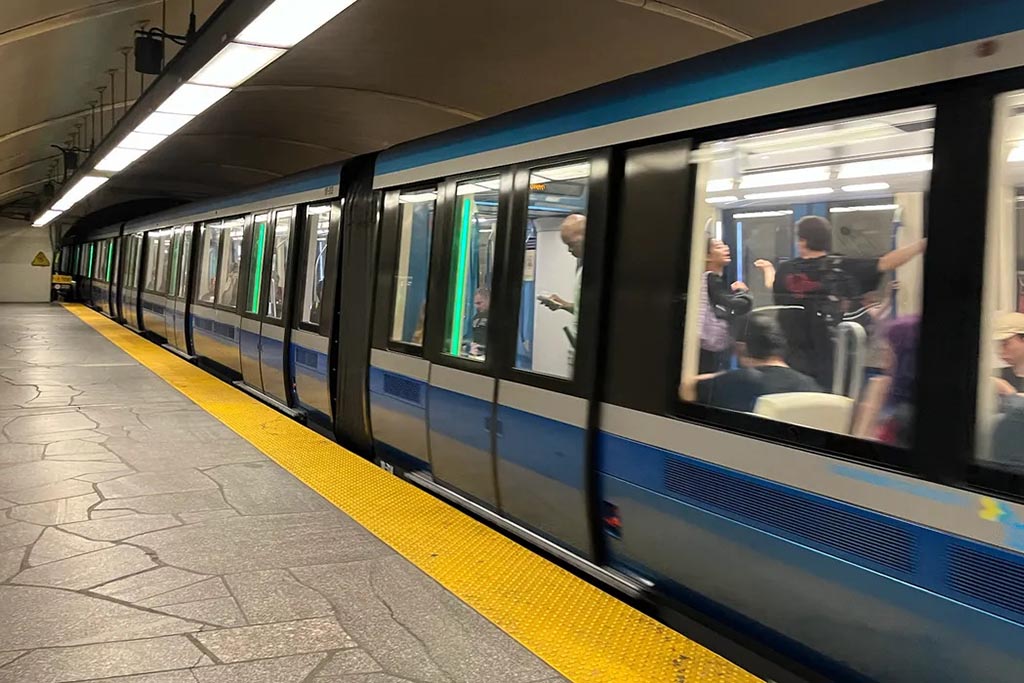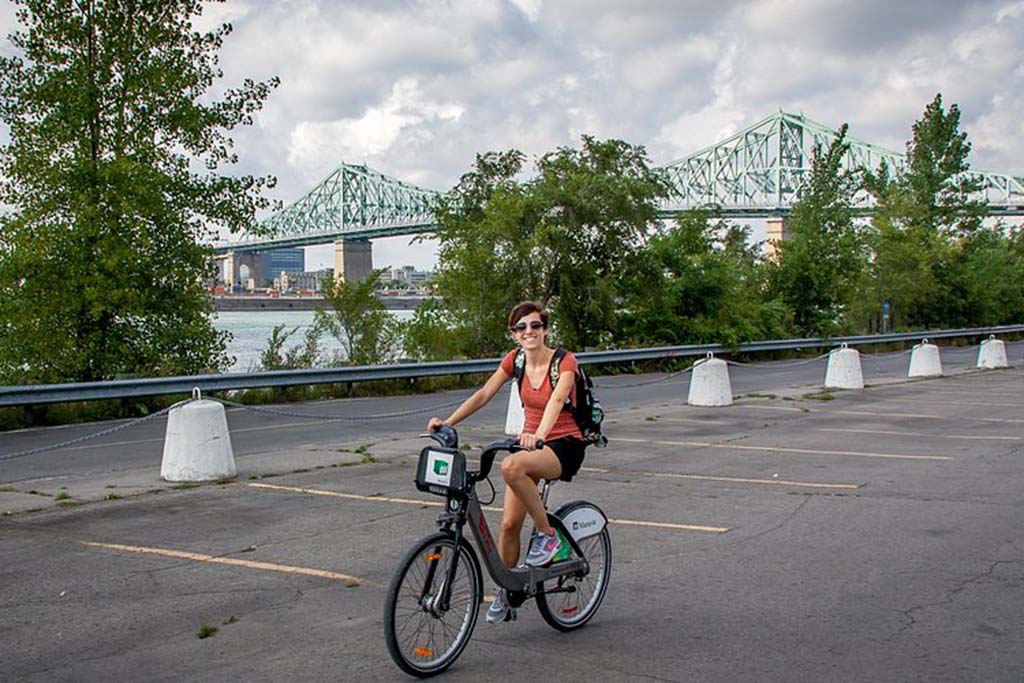Montreal, with its European charm, bilingual culture, and grid-meets-organic layout, is a city that rewards exploration. Navigating this city can be seamless and even enjoyable—if one understands how the transportation system works. Over several days of my trip, I tested the three pillars of Montreal’s public transport: the STM metro, the bus network, and the ever-convenient BIXI shared bikes. Each mode offered a unique perspective on the city and came with its own set of nuances, shortcuts, and surprises.
Let’s walk—or ride—through it.
1. The STM Metro: Montreal’s Underground Artery
First Encounters and Ticketing Tips
The first thing that struck me about the Montreal metro system is how intuitively it’s mapped. With only four lines—Green, Orange, Yellow, and Blue—it seems deceptively simple. But within that simplicity lies an effective and interconnected grid that covers the most essential neighborhoods and districts.
Buying a ticket was straightforward. I headed to a vending machine at Berri-UQAM station, which is one of the major hubs in the city. The machines are bilingual, which made the process quite smooth. I had the choice between single-use tickets, multi-trip passes, and daily or multi-day passes. Given my intent to crisscross the city several times a day, I opted for a 3-day unlimited pass. It cost me $21.25 CAD and was activated immediately upon first use.
It’s worth noting that the Opus card is an option if staying for longer. It’s a reloadable transit card, similar to an Oyster in London or a MetroCard in New York. However, the disposable paper tickets with a QR code were more than adequate for my needs. Tap them at the turnstile, and you’re in.
Navigating the Network
The Orange Line became my closest companion—it snakes from Côte-Vertu in the west to Montmorency in Laval, and it runs through downtown, passing major landmarks like Jean-Talon Market, Place-des-Arts, and Lionel-Groulx. If there’s a spine to the metro system, it’s this line.
The Green Line, meanwhile, took me eastward toward the Olympic Stadium and the Botanical Garden, both must-visits. I transferred between lines at Berri-UQAM several times—it’s the busiest station but rarely overwhelming. Clean, efficient, and on time: the Montreal metro system consistently lived up to expectations.
The Blue and Yellow lines are more specialized. The Yellow Line’s three-stop sprint from Berri-UQAM to Longueuil–Université-de-Sherbrooke brought me across the river to the South Shore. It was quiet, almost eerie, compared to the rest of the network. The Blue Line felt like a locals-only corridor, taking me to the Université de Montréal area, far from the tourist bustle.

Architecture and Ambience
Unlike many North American metro systems, Montreal’s has personality. Each station has unique design elements—art installations, colored tilework, sculptural pieces. Pie-IX station had vibrant red accents, while Namur felt retro-futuristic. Some stations even smelled distinct. It was a far cry from the homogeneous, fluorescent sameness of other cities’ subways.
One caveat: there’s no air conditioning. During my mid-May trip, it wasn’t a problem, but I can only imagine the situation during a muggy July day. On the other hand, there’s also no mobile signal underground, which turns each ride into a quiet, almost meditative break from the digital world.
2. Taking the Bus: Slower, But Surprisingly Strategic
The Network’s Breadth
Montreal’s buses crisscross the city like fine embroidery, reaching corners that the metro can’t touch. I relied on them particularly in neighborhoods like Outremont and Verdun, where metro access is limited or indirect. The 24 Sherbrooke line, running east-west along Sherbrooke Street, was especially useful. This street is a vital artery, passing by the Montreal Museum of Fine Arts and McGill University. Another frequent companion was the 55 Saint-Laurent, which traversed one of the city’s oldest and liveliest north-south routes.
Every bus I rode was clean and in good condition. Most drivers were friendly—or at the very least, patient. The signage at stops was clear, often listing the next three scheduled arrival times digitally. Montreal’s bus network also uses real-time tracking through the Transit app, which proved incredibly reliable. I found myself arriving at bus stops mere seconds before the vehicle did.
Timing and Tempo
Unlike the metro, which operates with predictable rhythm, the buses could be erratic. A bus that was due in 3 minutes sometimes didn’t appear for 10. On Saint-Denis Street during a construction detour, I ended up walking several blocks before I caught my bus again.
Rush hour can be a double-edged sword. While buses come more frequently, they also fill up quickly. I stood shoulder-to-shoulder with morning commuters more than once. Late at night, some routes run less frequently or stop altogether, so checking schedules beforehand is essential.
Transfers between bus and metro were seamless. The same ticket covered both, as long as the transfer occurred within 120 minutes of the first tap. It made planning multi-modal trips feel effortless.
A Ride Through Local Life
There’s something about riding a bus that offers a more intimate look at a city. I overheard teenagers debating in French and English, watched an old man wave thank-you to the driver with theatrical flourish, saw a delivery worker nod off with a pizza box on his lap.
From my window seat, I watched Montreal unfold at a slower pace: brick triplexes with spiral staircases, cafés with chalkboard menus, a woman walking her cat on a leash. These weren’t tourist sights, but they felt just as memorable.
3. BIXI: Montreal’s Two-Wheeled Freedom
Getting Started
I first spotted a BIXI station outside Mont-Royal metro, the green handlebars gleaming in the sunlight. The process to unlock a bike was simple. I downloaded the BIXI app, entered my credit card details, and bought a 3-day access pass for $20. I received a five-digit code, punched it into the station kiosk, and pulled the bike out with a satisfying metallic click.
Montreal is one of North America’s most bike-friendly cities, and it shows. Bike lanes are well-marked, often separated from car traffic by plastic bollards or even concrete dividers. The city has invested heavily in cycling infrastructure, and as a result, riding felt safe and intuitive—most of the time.
The Bikes Themselves

BIXI bikes are designed for durability more than speed. They’re solid, a little heavy, with seven gears and a decent front basket. Not exactly Tour de France material, but perfect for city cruising.
Each ride on a short-term pass includes up to 45 minutes at a time, after which additional fees apply. To avoid those, I planned my routes in segments. Ride 30 minutes, dock the bike, take a walk or grab a coffee, then continue. Docking stations were plentiful—over 800 around the city—and usually not more than a few blocks apart.
One thing to watch: occasionally, a station would be full or empty. The app showed real-time availability, which helped avoid unnecessary backtracking.
Favorite Rides
The ride from the Old Port along the Lachine Canal was the highlight of my BIXI experience. The path is flat, well-paved, and flanked by trees and water on one side, loft apartments and cafés on the other. I started at Rue de la Commune and rode westward, passing joggers, dog-walkers, and even a couple of inline skaters (a sight I hadn’t seen in years).
Another beautiful route led me up through the Plateau and Mile End. These neighborhoods are perfect for biking—compact, full of side streets, and rich in personality. I stopped at Fairmount Bagel, locked the BIXI, and devoured a sesame bagel while sitting on a stoop. It felt almost cinematic.
Cycling up Mont Royal was a different story. Ambitious, certainly. But the climb was steep and the BIXI bikes weren’t exactly built for hillwork. I pushed the bike for the final third of the way, which earned me several sympathetic nods from passing joggers.
4. Minor Obstacles and Local Etiquette
Language Isn’t a Barrier—Mostly
All transport signage is in French, but symbols and diagrams make everything self-explanatory. Most drivers and staff I encountered could speak English when needed, but opening with “Bonjour” always helped. It was appreciated and often reciprocated with friendliness.
The BIXI app and STM tools are available in English. Google Maps was my go-to navigator, although the local Transit app was even better for buses and real-time alerts.
Weather Is a Factor
Montreal’s seasons are extreme. In May, the weather was mild—ideal for biking and walking. But during winter, biking becomes impractical and even buses may face delays. The metro, being underground, is the most reliable year-round.
Rainy days change everything. Biking becomes hazardous, and walking between bus stops gets uncomfortable. An umbrella and waterproof shoes became my best allies one day when a sudden storm rolled through.
Accessibility and Comfort
Most metro stations have stairs, and not all are equipped with elevators. For someone with mobility challenges, this could be limiting. Buses are more accessible—kneeling buses with ramps were common.
The BIXI system does offer e-bikes in limited quantities. I only tried one once, but the extra boost was delightful, especially when climbing mild inclines.
